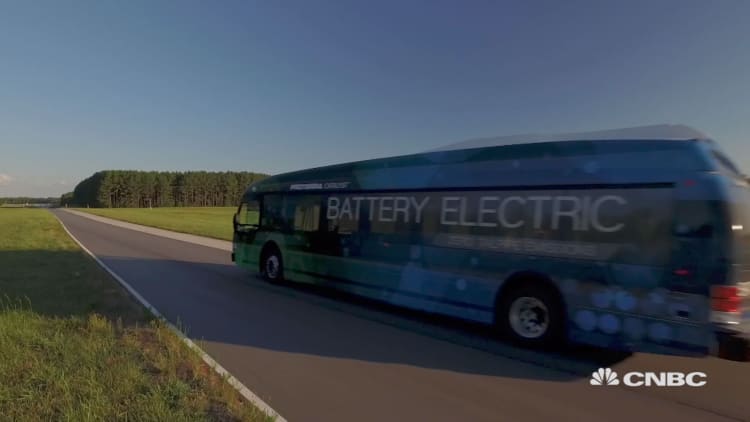
Around the world, hundreds of millions, if not billions, of people use buses to get around towns and cities.
While they are incredibly popular and often cheap forms of transport, they do have an environmental impact, with emissions from exhaust pipes being a serious issue.
Change is afoot, however. While many buses are run on diesel, companies and city authorities around the world are, slowly but surely, turning to cleaner sources of fuel.
In the Chinese city of Shenzhen, for example, there are more than 10,000 electric buses, while Aberdeen in Scotland is home to a fleet of hydrogen-powered vehicles.
In London, plans are in place to introduce roughly 3,000 "ultra-low emission" double-deckers to central London by 2019 and more than 250 zero emission single-deckers by 2020. As of today, more than 2,600 diesel-electric hybrid buses are on the capital's streets.
In the U.S., one business has been designing and developing battery-electric buses with a view to boosting both efficiency and the environment. Founded in 2004, California-headquartered Proterra started designing its first prototype the same year, and sold its first three buses in 2009.
Ryan Popple, the company's CEO, told CNBC's "Sustainable Energy" that the company was constantly looking to improve designs and performance. "Every day engineers at Proterra are trying to figure out how to increase energy density, how to reduce (the) weight of the vehicle and how to make the drive train even more energy efficient," he said.
Proterra's Catalyst bus model is made with what the business describes as an "an advanced carbon-fiber-reinforced body" and a high efficiency electric drivetrain. Continuous progress is key to the business. Last September, a Proterra bus drove just over 1,101 miles on a single charge.
"Two years ago the maximum distance we could do on a track was about 250 miles," Popple said. "A year ago it was 600 miles and then last fall we broke the record, it was 1,100. So we're just seeing massive step changes in capability."




